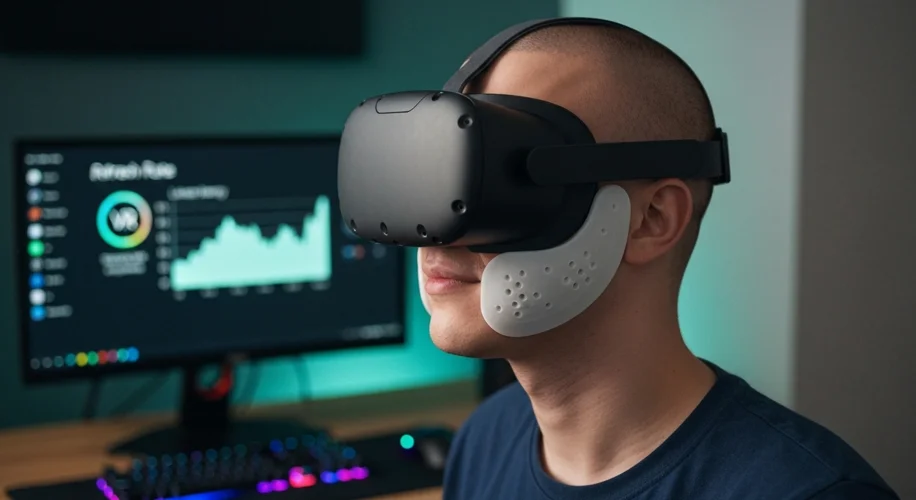Hey everyone, Mateo here! So, you’ve dived into VR, and it’s awesome, right? But maybe you’ve noticed a few things – like the headset feeling a bit… snug after a while, or maybe a weird stutter that breaks the immersion. Today, we’re talking about making your virtual reality setup even better, focusing on comfort and performance.
Custom Face Interfaces: Your VR’s Cozy Upgrade
One of the coolest ways to personalize your VR experience is by customizing the part that touches your face. Stock face interfaces can be okay, but they’re usually a one-size-fits-most deal. This can lead to pressure points, fogged-up lenses, and just general discomfort during longer sessions. That’s where 3D printing comes in.
Think about it: you can design or download files for a custom face interface that perfectly matches the contours of your face. This isn’t just about comfort, though. Many custom designs incorporate ventilation channels. Imagine actively pushing air around the lenses and your face – it seriously reduces that dreaded lens fog and keeps you cooler. Plus, some designs even allow for better weight distribution, making the headset feel lighter.
What you’ll need:
* A 3D Printer: If you don’t have one, maybe a friend does, or check out local makerspaces. Resin printers can offer incredible detail, while FDM printers are more accessible.
* 3D Modeling Software (Optional): Programs like Blender or Fusion 360 let you design from scratch. But don’t worry if you’re not a designer – sites like Thingiverse, Printables, and MyMiniFactory have tons of pre-made VR accessories.
* Filament/Resin: For FDM printers, PLA is a good starting point, but PETG or TPU might offer more flexibility and durability. For resin printers, standard resins work well.
* Comfort Padding: Often, you’ll want to add some soft foam or fabric to the interface for that extra layer of comfort.
When you’re printing, pay attention to layer height for detail and print orientation for strength. And remember to clean up any support material thoroughly before putting it on your headset.
Tackling VR Performance Glitches: Stuttering & Latency
Okay, so comfort is sorted. What about performance? Nothing kills VR immersion faster than stuttering or noticeable latency (that slight delay between your movement and what you see). Here are a few common culprits and fixes:
- Check Your PC Specs: VR is demanding! Make sure your PC meets or exceeds the recommended specs for your headset and the games you’re playing. A quick Google search for “[Your Headset Name] PC Requirements” is your best friend.
- Update Graphics Drivers: Seriously, this is often the magic bullet. Go to NVIDIA or AMD’s website and download the latest drivers for your graphics card. They frequently optimize performance for new games and VR applications.
- Close Background Apps: Every bit of processing power counts. Close down unnecessary programs like web browsers, streaming apps, or other launchers before diving into VR.
- Lower In-Game Settings: If stuttering persists, try reducing graphics settings within the VR game itself. Lowering resolution, shadows, anti-aliasing, or texture quality can make a huge difference.
- Wired vs. Wireless: If you’re using a wireless PC VR solution (like Air Link or Virtual Desktop), ensure your Wi-Fi network is strong and stable, ideally using a 5GHz connection and a dedicated router if possible. Sometimes, going wired (if your headset supports it) can eliminate wireless interference and latency issues entirely.
- Monitor Refresh Rate: Ensure your headset’s refresh rate is correctly set in your VR software (like SteamVR or Oculus software) and that your PC’s monitor refresh rate isn’t causing conflicts.
Customizing your VR setup with 3D printing can seriously enhance comfort, while a few smart troubleshooting steps can ensure smooth, lag-free performance. It’s all about tailoring the tech to fit your experience. Happy VRing!

